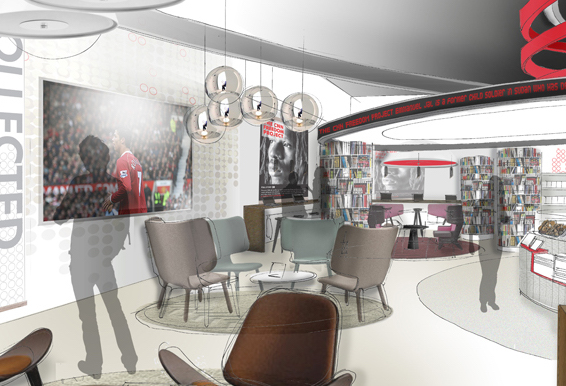Global architecture and design firm Perkins+Will announced today that it has acquired the London-based branding, retail strategy, and design consultancy Portland Design Associates.
Portland, whose clients include British Land, Heathrow Airport, St. Pancras International, Diageo, HMS Host, CNN, and TDIC, is best known for crafting brand and retail strategies that “future proof” their clients’ business by anticipating changes in how customers shop in, and interact with, places.
Portland will become the latest creative services business to join the Perkins+Will group of companies. While Portland will maintain its own brand and operate as an independent entity, the two enterprises will work closely together to deliver “future-proofing” insights to clients. This includes a mix of physical and digital brand experiences for projects ranging from retail, entertainment, and mixed-use to transportation and urban regeneration.
“Our clients will benefit from Portland’s consumer insights, creativity, and strategic thinking, and Portland’s clients will benefit from Perkins+Will’s global reach and broad architectural, design, and planning expertise,” says Perkins+Will President and CEO Phil Harrison.
While Perkins+Will has already engaged Portland as a strategy consultant on various projects in the past, the permanent union of the two companies will strengthen and expand both of their service offerings. It will also allow Portland to work closely with Perkins+Will’s Branded Environments practice to service a greater number of clients globally.
Founded in 1987, Portland and its 40 employees have been under Ibrahim’s leadership since 2007. Ibrahim will continue to serve as Managing Director.
Related Stories
Building Team | Feb 24, 2015
Call for entries: 2015 Giants 300 survey
The annual Giants 300 Report ranks the top AEC firms in commercial construction, by revenue.
Industrial Facilities | Feb 24, 2015
Starchitecture meets agriculture: OMA unveils design for Kentucky community farming facility
The $460 million Food Port project will define a new model for the relationship between consumer and producer.
University Buildings | Feb 23, 2015
Future-proofing educational institutions: 5 trends to consider
In response to rapidly changing conditions in K-12 and higher education, institutions and school districts should consider these five trends to ensure a productive, educated future.
Office Buildings | Feb 23, 2015
The importance of quiet and the consequences of distraction
Recent work style studies show that the average knowledge worker spends 25-35% of their time doing heads-down focused work. Once thrown off track, it can take some 23 minutes for a worker to return to the original task.
Modular Building | Feb 23, 2015
Edge construction: The future of modular
Can innovative project delivery methods, namely modular construction, bring down costs and offer a solution for housing in urban markets? FXFOWLE’s David Wallance discusses the possibilities for modular.
| Feb 23, 2015
6 trends changing the way city dwellers live
Across the cultural grid, from food to retail to transportation, America's urban areas are already undergoing a major metamorphosis. Here are the six major trends shaping our cities, from Fast Company.
Green | Feb 23, 2015
State of the green union, and the next big shift in sustainability
The history of the green movement offers cues that we are on the precipice of another significant shift in the green union.
| Feb 23, 2015
Where are the iconic green buildings?
What does a green building look like? How would you know one if you saw one? Maybe a trivial question to some, but of great interest to architects, designers, and other members of the Building Team as the rapid evolution of sustainable buildings continues apace.
Sports and Recreational Facilities | Feb 21, 2015
Pumped-up recreation centers help build body, mind, and spirit
Adopting facility layouts from Asian and European models, today’s sports and recreational buildings are becoming social hubs that accommodate a variety of community needs.
University Buildings | Feb 20, 2015
Penn strengthens campus security by reviving its surrounding neighborhood
In 1996, the University of Pennsylvania’s sprawling campus in Philadelphia was in the grip of an unprecedented crime wave. But instead of walling themselves off from their surrounding neighborhoods, the school decided to support the community.















